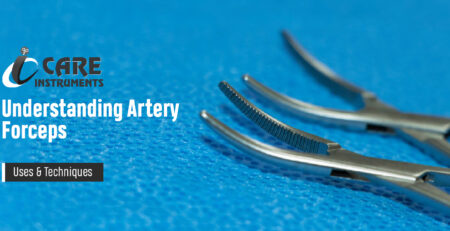Importance of ENT Instruments in Otorhinolaryngology Procedures
ENT instruments are specifically designed to help surgeons perform intricate procedures on the ears, nose, and throat. When it comes to otorhinolaryngology procedures, precision is key. That’s why having the right tools is essential. In this article, we’ll discuss how ENT instruments can help during otorhinolaryngology procedures and why they are an essential part of any ENT surgeon’s toolkit.
Understanding ENT Instruments
 ENT instruments are surgical tools specifically designed to help surgeons perform procedures on the ears, nose, and throat. These instruments are designed to be precise, durable, and easy to use. ENT instruments come in many different shapes and sizes and are made from a variety of materials, including stainless steel, titanium, and plastic.
ENT instruments are surgical tools specifically designed to help surgeons perform procedures on the ears, nose, and throat. These instruments are designed to be precise, durable, and easy to use. ENT instruments come in many different shapes and sizes and are made from a variety of materials, including stainless steel, titanium, and plastic.
With a wide range of shapes and sizes available, including forceps, scissors, retractors, and microscopes, ENT instruments are made from high-quality materials like stainless steel, titanium, and plastic. In the hands of a skilled ENT surgeon, these instruments can make all the difference in achieving optimal results for patients.
The Different Types of ENT Instruments
There are many different types of ENT instruments, each designed for a specific purpose. Here are a few examples:
- Otoscopes: Used to examine the ear canal and eardrum
- Nasal speculums: Used to hold open the nostrils during nasal procedures
- Forceps: Used to grasp tissue and other objects during procedures
- Microscopes: Used to magnify the surgical site for increased precision
- Tympanometers: Used to test the middle ear’s function
- Surgical knives and scissors: Used to make incisions and cut tissue during procedures
How ENT Instruments Help During Otorhinolaryngology Procedures
ENT instruments are essential during otorhinolaryngology procedures because they help surgeons perform intricate and delicate procedures with precision. For example, during a cochlear implant procedure, an ENT surgeon uses an otoscope to examine the patient’s ear canal and eardrum. Then, they use a surgical knife to make a small incision in the ear, and a forceps to carefully insert the cochlear implant.
 In another example, during a rhinoplasty procedure, an ENT surgeon uses a nasal speculum to hold open the patient’s nostrils. They then use surgical knives and scissors to reshape the patient’s nasal bones and cartilage to achieve the desired result.
In another example, during a rhinoplasty procedure, an ENT surgeon uses a nasal speculum to hold open the patient’s nostrils. They then use surgical knives and scissors to reshape the patient’s nasal bones and cartilage to achieve the desired result.
Without the right ENT instruments, these procedures would be much more difficult, and the risk of complications would be much higher. Using the right instruments also ensures that the procedure is completed quickly and efficiently, reducing the patient’s time under anesthesia and minimizing their discomfort.
Choosing the Right ENT Instruments
Choosing the right ENT instruments is essential for any ENT surgeon. There are many factors to consider when selecting the right instruments, including:
 The type of procedure being performed
The type of procedure being performed- The patient’s anatomy
- The surgeon’s level of experience
- The desired outcome
When selecting ENT instruments, it’s important to choose instruments that are durable, easy to use, and provide the level of precision needed for the procedure. It’s also important to ensure that the instruments are properly sterilized and maintained to prevent infection and ensure that they last as long as possible.
Additionally, it’s important to ensure that the instruments are properly sterilized and maintained to prevent infection and prolong their lifespan. With proper care and attention, ENT instruments can provide reliable and accurate results, enhancing patient outcomes and ensuring the success of the procedure.
Conclusion
ENT instruments are an essential part of any ENT surgeon’s toolkit. These instruments help surgeons perform delicate and intricate procedures with precision, reducing the risk of complications and ensuring that the patient recovers quickly and comfortably. When choosing ENT instruments, it’s important to consider the type of procedure being performed, the patient’s anatomy, and the desired outcome. With the right instruments and proper technique, ENT surgeons can help their patients achieve the best possible outcomes.

 The type of procedure being performed
The type of procedure being performed
Leave a Reply
You must be logged in to post a comment.